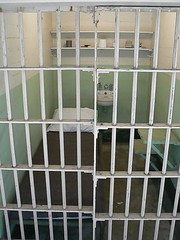 Incarcerating juveniles for life is a uniquely American failing. The U.S. is the only nation that makes this blunder.
Incarcerating juveniles for life is a uniquely American failing. The U.S. is the only nation that makes this blunder.
Most of the problem stems from the 1990’s when the histrionic term “super-predator” came into vogue among a certain vocal and excitable group. Randy Hertz of The Nation sums up that background nicely:
In the 1990s, a small group of academics capitalized on and galvanized a growing hysteria about violent crime by youths, speculating that an anticipated rise in the youth population, coupled with spurious theories about the exceptional deviance of children of color growing up poor, would lead to a new generation of ‘severely morally impoverished juvenile super-predators…capable of committing the most heinous acts of physical violence for the most trivial reasons.’ Fearing that the rehabilitation-focused juvenile justice system would be inadequate to protect society from this impending menace, lawmakers passed laws that circumvented juvenile court and sent kids to criminal court for prosecution as adults.
Our position on prosecuting kids as adults is abundantly clear. It is detrimental to the kids, to society, and to the financial bottom line. It exposes children to hardened criminals while still at a malleable stage of the development. The list of issues with that approach is long and varied.
Hertz continues with a vital note on the matter. You see, the expert recanted.
The same expert who coined the term ‘super-predator’ now acknowledges that it was nothing but a ghost story, a terrifying myth with disastrous consequences. In an amicus brief to the Supreme Court in support of Miller and Jackson, this expert—and others—note that the juvenile crime rates actually dropped from 1994 to 2000. But a relative handful of children accused of serious crimes—a grossly disproportionate number of them children of color—found themselves caught permanently in the web spun by academics and politicians, sentenced to die in prison with no hope of release no matter how they might transform and reform themselves. Once we give up on these children, many prisons compound the hopelessness by failing to provide access to educational programs.
This coming week the Supreme Court will revisit the subject. The hearing will involve two different cases, both young boys who at the age of 14 committed murder. Both cases shared another characteristic – a sentence of life in prison with no potential for parole.
The outrage was immediate among advocates, who called the sentence “brutal” for failing to recognize the difference between the actions of the immature youths and the actions of an adult.
Judge Gail Garinger, State Child Advocate for Massachusetts and former juvenile court justice, weighs in on the matter (via The New York Times):
Homicide is the worst crime, but in striking down the juvenile death penalty in 2005, the Supreme Court recognized that even in the most serious murder cases, ‘juvenile offenders cannot with reliability be classified among the worst offenders’: they are less mature, more vulnerable to peer pressure, cannot escape from dangerous environments, and their characters are still in formation. And because they remain unformed, it is impossible to assume that they will always present an unacceptable risk to public safety.
The most disturbing part of the superpredator myth is that it presupposed that certain children were hopelessly defective, perhaps genetically so. Today, few believe that criminal genes are inherited, except in the sense that parental abuse and negative home lives can leave children with little hope and limited choices.
As a former juvenile court judge, I have seen firsthand the enormous capacity of children to change and turn themselves around. The same malleability that makes them vulnerable to peer pressure also makes them promising candidates for rehabilitation.
Let us hope the good sense behind the murder decision in 2005 has a resurgence while they contemplate the current situation. The Alabama Equal Justice Initiative is arguing on behalf of the defendants, and their assertion that life in prison for juveniles constitutes cruel and unusual punishment is one that we support.
It is not that we in any way condone the actions, the loss of human life is horrible no matter the circumstances. The simple fact is that young people and adults have a number of purely biological differences. Brain imaging studies have shown that the parts of the adolescent brain responsible for controlling thoughts, actions and emotions are not fully developed. For this reason alone it is imperative that we use appropriate standards for punishment as opposed to dealing with them like adults.
For more on this subject please check out our latest book- Born, Not Raised: Voices from juvenile Hall. It’s hot of the presses having only been released this last week!















